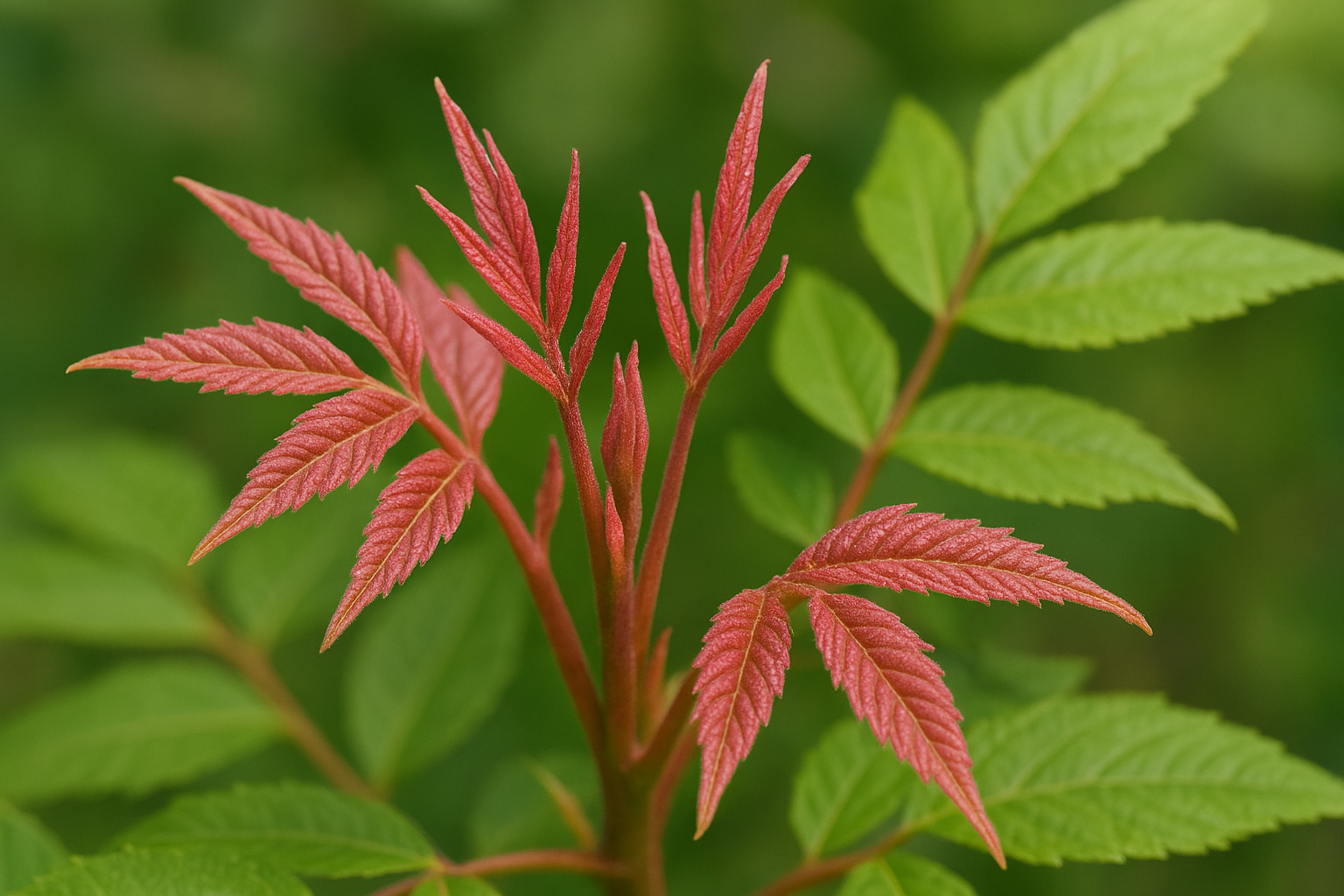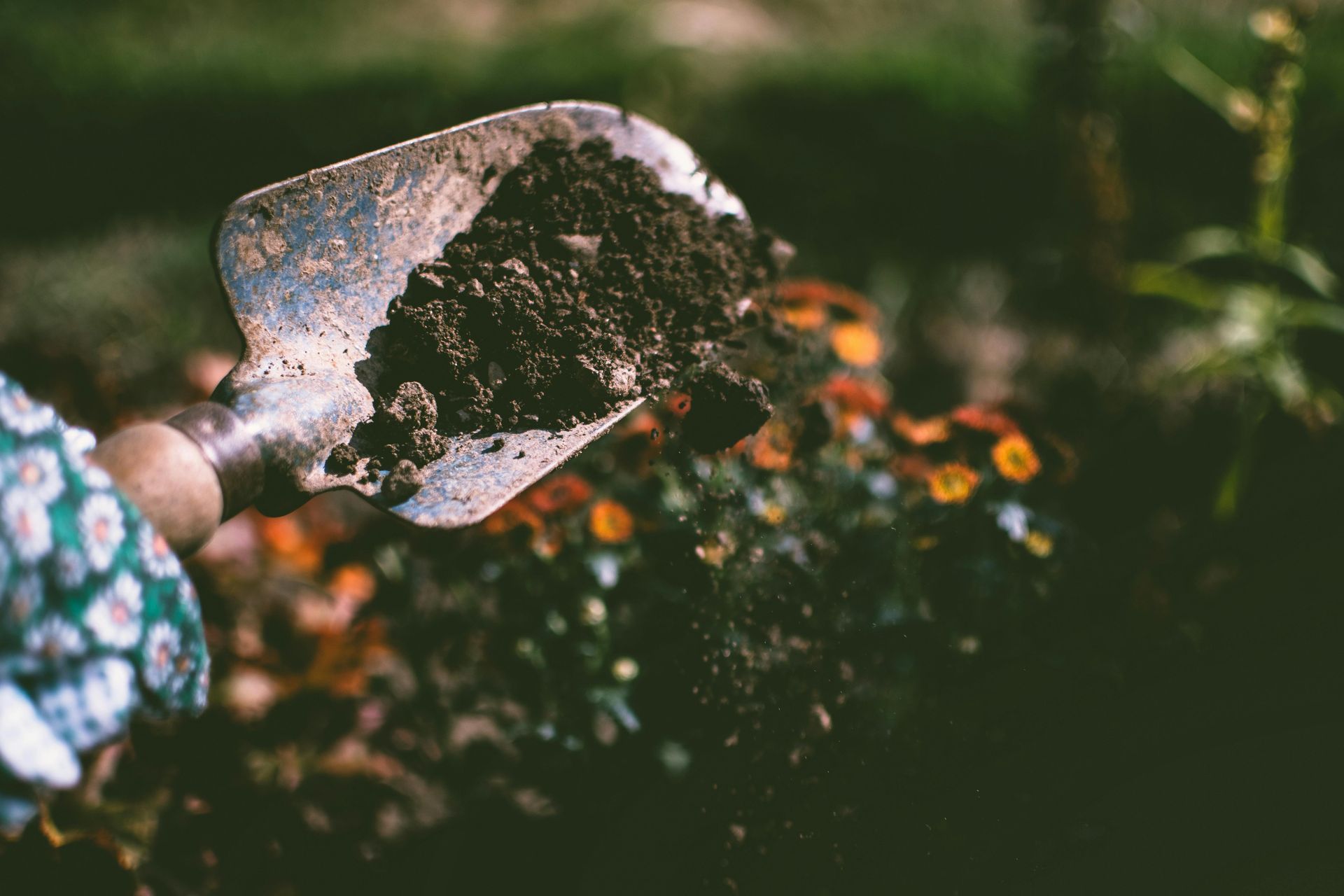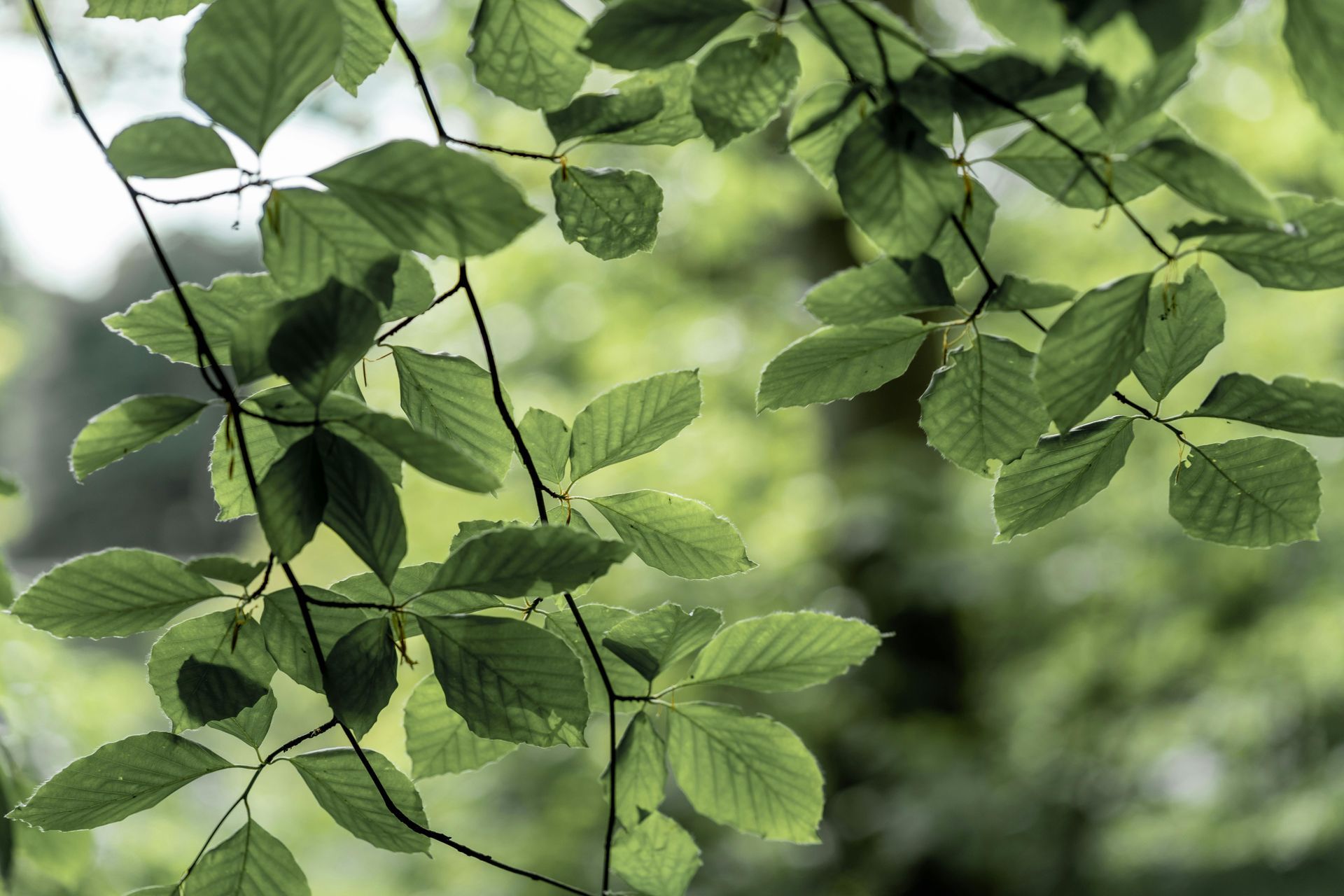Everyday Practices for Living Sustainably in 2025
The new year offers an ideal opportunity to reflect on how our daily choices impact the world around us. By embracing sustainable practices, we can create healthier environments, conserve resources, and reduce waste—all while fostering a deeper connection to the planet.
Sustainability is crucial because it ensures that we meet our needs without compromising the ability of future generations to meet theirs. It helps combat climate change, preserve biodiversity, and maintain the natural systems we rely on for clean air, water, and food. A cornerstone of sustainability is the "Three R's" of recycling: Reduce, Reuse, and Recycle. These principles guide us to minimize waste, extend the life of resources, and properly recycle materials to prevent them from ending up in landfills.
Adopting sustainable habits doesn’t have to be complicated. With small, intentional changes, we can collectively make a big difference. Here are some practical ways to incorporate sustainability into your everyday life as you embark on a fresh start this new year:
1. Rethink Waste
Adopting the principles of reduce, reuse, and recycle can start with simple adjustments to your daily habits.
- Reduce waste by avoiding single-use plastics, bringing reusable bags to the grocery store, and purchasing items in bulk using reusable containers.
- Reuse materials by repurposing glass jars as storage containers, upcycling old furniture into fresh designs, or switching to durable alternatives like cloth napkins, washable sponges, reusable food wraps, and refillable pens.
- Recycle effectively by familiarizing yourself with your local recycling center's guidelines to ensure proper sorting. Use designated drop-off points for hard-to-recycle items such as electronics, batteries, and plastic bags.
- Compost organic waste to enrich your soil and significantly reduce landfill contributions.
By integrating these small yet impactful changes into your routine, you can make meaningful strides toward a more sustainable lifestyle.
2. Mindful Consumption
Mindful consumption is about being intentional and thoughtful in your choices as a consumer to reduce waste, conserve resources, and align purchases with your values.
Assess Needs vs. Wants
- Before making a purchase, pause and consider whether the item fulfills a genuine need or is driven by an impulsive desire.
- For non-essential items, adopt a "30-day rule": wait a month to evaluate if the desire for the item persists, which often reduces impulsive spending.
- Regularly inventory your belongings to understand what you already have and avoid buying duplicates. This practice also helps identify items that can be repurposed or shared with others.
Prioritize Quality Over Quantity
- Invest in durable, high-quality products that stand the test of time, such as well-constructed furniture, long-lasting appliances, and sturdy clothing. These items often save money and resources over time.
- Support companies committed to sustainable and ethical practices by researching their production processes, certifications, and transparency.
- Learn simple maintenance skills like sewing, repairing electronics, and performing basic upkeep on appliances to prolong their usability and reduce waste.
Choose Ethical and Sustainable Products
- Seek out brands that prioritize fair wages for workers, ethical sourcing, and local production to minimize environmental impact.
- Look for certifications such as Fair Trade, USDA Organic, or Global Recycled Standard to identify products that align with sustainable values.
- Support companies that provide clear information about their supply chain and environmental initiatives, ensuring accountability in their manufacturing processes.
Buy Secondhand or Borrow
- Shop for pre-owned clothing, furniture, and household items at thrift stores, consignment shops, or online platforms like Craigslist, Facebook Marketplace, or Freecycle.
- Borrow items you’ll use infrequently, such as tools, books, or party supplies, from friends, neighbors, or community lending programs.
- Join local buy-nothing groups or participate in neighborhood swaps to exchange items you no longer need for those you do, fostering community and reducing waste.
Support Minimalist Practices
- Build a versatile wardrobe with quality, timeless clothing pieces that can be mixed and matched for various occasions, reducing the need for excess items.
- Invest in multi-functional furniture and decor, such as a storage ottoman or a dining table with extendable leaves, to maximize utility while minimizing clutter.
- Stream music and movies through digital platforms to avoid the waste associated with physical copies.
- Go paperless by opting for electronic billing, unsubscribing from unnecessary catalogs, and choosing digital options like e-books, online subscriptions, and cloud storage for your documents.
Be Mindful of Energy and Resource Consumption
- Choose appliances and electronics with high energy-efficiency ratings (look for ENERGY STAR certifications) to lower electricity use and costs.
- Install water-saving devices like low-flow showerheads, faucets, and dual-flush toilets to reduce water waste without sacrificing performance
- Make it a habit to turn off and unplug devices when they’re not in use to prevent phantom energy consumption.
- Replace traditional incandescent lightbulbs with long-lasting LED bulbs that use significantly less energy.
- Seal drafts around windows and doors and use a programmable thermostat to improve energy efficiency and reduce heating or cooling costs.
- If feasible, explore renewable energy options like installing solar panels or subscribing to community solar programs to reduce reliance on fossil fuels.
3. Water Conservation
Water conservation involves managing water resources wisely to ensure their sustainable use and availability.
Efficient Water Use at Home
- A single leaky faucet can waste over 3,000 gallons of water annually, while a continuously running toilet can waste even more. Regularly inspect all water fixtures and pipes for drips, leaks, or inefficiencies, and repair them as soon as possible.
- Replace outdated faucets, showerheads, and toilets with low-flow or water-saving models. For instance, low-flow toilets use 1.28 gallons per flush compared to the standard 3.5 gallons, cutting water use by more than half.
- Reducing shower time by just a few minutes can save a substantial amount of water. Pair shorter showers with a low-flow showerhead, which uses around 2 gallons per minute instead of the typical 5, to save up to 15 gallons per shower.
- A running faucet can waste up to 4 gallons per minute. Turn it off while brushing your teeth, shaving, or scrubbing dishes to save water with minimal effort.
Smart Landscaping
- Choose plants native to your region or those requiring minimal watering, such as succulents, lavender, or ornamental grasses. Native plants are often better adapted to the local climate and soil, reducing maintenance and water needs.
- Apply a thick layer of organic mulch (such as wood chips, straw, or leaves) around the base of plants to lock in soil moisture, prevent evaporation, and suppress weeds that compete for water and nutrients.
- Use drip irrigation systems to deliver water directly to plant roots, minimizing runoff and evaporation. Drip systems can use 30-50% less water than traditional sprinklers.
- Water plants early in the morning or late in the evening when temperatures are cooler to reduce water loss through evaporation.
Water-Efficient Appliances
- Look for appliances with high water-efficiency ratings, such as those certified by ENERGY STAR. Modern dishwashers can use as little as 4 gallons per load, compared to 20 gallons for handwashing dishes.
- Maximize the efficiency of dishwashers and washing machines by running them only when they are fully loaded, which reduces the frequency of cycles and overall water use.
- Consider installing toilets with dual-flush options that provide separate flush settings for liquid and solid waste, allowing you to use less water for lighter flushes.
Reduce Outdoor Water Waste
- Instead of using a hose to clean sidewalks, driveways, or patios, use a broom. This can save up to 80 gallons of water in a single cleaning session.
- Pool covers reduce water loss from evaporation by up to 90%. They also keep debris out of the pool, reducing the frequency of cleaning and refilling.
- Ensure your sprinklers are positioned to water plants, lawns, and gardens rather than pavement, which leads to unnecessary waste.
Protect Water Sources
- Dispose of hazardous household materials like paint, motor oil, and cleaning products at designated drop-off locations. Never pour them down the drain, as they can contaminate local water supplies.
- Wetlands act as natural water filters and reservoirs, trapping pollutants and regulating water flow. Support conservation efforts and avoid activities that could harm these vital ecosystems.
- Trees reduce surface runoff, allowing more water to soak into the soil. Their roots also stabilize soil and improve water retention, helping to replenish underground aquifers.
4. Sustainable Transportation
Sustainable transportation focuses on reducing environmental impacts, conserving resources, and promoting efficiency and accessibility.
Walking and Cycling
- Walking is ideal for short distances, requires no fuel, produces zero emissions, and promotes physical health. Communities can enhance walkability with well-maintained sidewalks, pedestrian crossings, and green spaces.
- Cycling is a low-cost, zero-emission mode of transport suitable for short to medium distances. Cities can support cycling by building bike lanes, offering bike-sharing programs, and providing secure parking facilities.
Public Transportation
- Public transit systems are more energy-efficient than individual vehicles because they transport many people at once, maximizing energy use per passenger. Supporting electric or hybrid buses and trains can further reduce emissions and improve sustainability.
- Efficient for urban travel, subways and trams reduce traffic congestion and improve air quality. Encourage governments to expand and modernize public transit networks.
- Apps and services like carpooling reduce the number of vehicles on the road, cutting fuel use and emissions.
Telecommuting and Virtual Meetings
- Encourage employers to adopt flexible remote work policies. Reducing commuting frequency lowers emissions and traffic congestion while also saving employees time and money. Flexible work arrangements can improve work-life balance and productivity, making them a win-win for both businesses and the environment.
- Substitute business travel with video conferencing tools like Zoom, Microsoft Teams, or Google Meet. Virtual meetings eliminate the need for flights and long car trips, significantly reducing the carbon footprint of business operations.
5. Support Green Spaces
A green space is an area of land that is intentionally preserved or developed with vegetation, such as grass, trees, shrubs, or other plants. These areas are often set aside in urban or suburban environments to provide environmental, recreational, and aesthetic benefits.
Examples of green spaces include parks, community gardens, nature reserves, greenways, schoolyards, and rooftop gardens. They play a crucial role in improving air quality, reducing noise pollution, cooling urban areas, supporting biodiversity, and providing a place for people to relax, exercise, and connect with nature. Green spaces also contribute to the overall health and well-being of communities by promoting mental health and encouraging physical activity.
Participate in Community Cleanups
- Collaborate with local organizations or neighbors to remove litter from parks and green areas. Regular cleanups ensure that green spaces remain welcoming and safe for visitors.
- Many municipalities offer programs where groups can commit to maintaining a specific park or area.
Plant Trees and Vegetation
- Join or start local tree-planting drives to increase urban greenery. Plant native species that support local wildlife and thrive in the climate.
- Transform vacant lots into gardens where community members can grow flowers, fruits, and vegetables. Gardens not only beautify spaces but also foster community engagement.
Volunteer in Green Space Projects
- Many environmental groups focus on maintaining and improving green spaces. Volunteer for activities like planting, invasive species removal, or educational outreach.
- Help build or maintain walking trails, benches, or playground equipment in parks.
Promote Native Landscaping
- In your own yard or community projects, prioritize native plants that support pollinators and require less maintenance. Native plants help create ecological corridors that connect fragmented habitats.
- Replace sections of traditional lawns with wildflower meadows, shrubs, or ground cover to promote biodiversity.
Encourage Green Infrastructure
- Advocate for the installation of vegetation on rooftops and vertical surfaces in urban areas. Green infrastructure helps regulate temperature, reduce stormwater runoff, and improve air quality.
- Support the creation of rain gardens in public spaces to manage stormwater and provide habitats for wildlife.
Protect Wildlife Habitats
- Provide shelters and food sources for birds and other wildlife in green spaces.
- Protect existing trees, wetlands, and natural water bodies in parks to maintain biodiversity.
Support Pollinator Habitats
- Plant flowering species that attract bees, butterflies, and hummingbirds in public and private green spaces.
- Promote the use of organic alternatives to chemicla pesticides to protect pollinators and other beneficial insects.
6. Eco-Friendly Cleaning
Using eco-friendly cleaning practices is an excellent way to reduce your environmental impact while maintaining a clean and healthy living space.
Use Natural Cleaning Ingredients
- White vinegar is a versatile cleaner, and can remove stains, cut grease, and disinfect surfaces. Mix with water for an all-purpose spray. Great for cleaning windows, countertops, and even coffee makers.
- Baking soda is effective for scrubbing and deodorizing. Use it to clean sinks, bathtubs, or remove odors from carpets. Combine with vinegar for a powerful reaction to unclog drains.
- Lemon juice acts as a natural bleach and disinfectant. Use it to clean cutting boards, remove stains, or freshen up garbage disposals.
- Switch to castile spap, a biodegradable, plant-based soap suitable for cleaning floors, dishes, and even as a laundry detergent.
- Add lavender, tea tree, or eucalyptus oil to homemade cleaners for antimicrobial properties and a pleasant scent.
Choose Eco-Friendly Cleaning Products
- Look for products with certifications like EPA’s Safer Choice, EcoLogo, or Green Seal. These labels ensure the product meets environmental and health standards.
- Opt for cleaners that break down naturally and don’t pollute waterways.
- Avoid products containing harsh chemicals like ammonia, chlorine, or phthalates. These can harm your health and the environment.
Minimize Packaging Waste
- Purchase cleaning products that allow for refills to reduce single-use plastic waste.
- Use concentrated formulas that require dilution, reducing the amount of packaging and energy needed for transportation.
- Make your own cleaning solutions using household items to eliminate packaging entirely.
Adopt Sustainable Cleaning Tools
- Replace paper towels with washable microfiber cloths or old t-shirts for wiping and scrubbing.
- Use sponges made from plant-based materials that can decompose naturally.
- Choose cleaning brushes with bamboo handles and plant-fiber bristles instead of plastic.
Avoid Harmful Air Pollutants
- Open windows instead of using aerosol sprays, which can release harmful VOCs (volatile organic compounds) into the air.
- Simmer citrus peels or cinnamon sticks for a natural air freshener instead of chemical sprays.
Maintain Regular Cleaning
- Frequent maintenance cleaning reduces the need for harsh products or intensive scrubbing.
- Keep spaces organized to prevent dirt accumulation and make cleaning more efficient.
7. Eat Sustainably & Practice Conscious Grocery Shopping
- Avoid food waste by buying only what you need for planned meals.
- Support local farmers and reduce your carbon footprint by purchasing seasonal produce.
- Use reusable produce bags and containers for bulk shopping.
8. Engage in Experiences Over Things
- Prioritize experiences like cooking classes, museum passes, or trips over physical gifts.
- Focus on enjoying what you already have rather than seeking fulfillment through material goods.
9. Educate & Reflect
- Keep a journal or use apps to monitor your consumption habits and progress.
- Learn about the environmental and social impacts of consumerism and share your knowledge.
- Regularly check that your purchases align with your personal and environmental values.
- Share the benefits of waste reduction with friends, family, and your community.
- Collaborate with sustainability-focused groups to learn new strategies and inspire collective action.
Conclusion
Rethinking waste involves a mindset shift—viewing waste not as something to discard but as a resource to be managed wisely. Each small change contributes to a significant impact on the planet's health.
By adopting these habits, you’ll not only reduce your ecological footprint but also inspire others to live sustainably. Starting small and remaining consistent can lead to significant positive changes, making the new year a fresh beginning for you and the planet. Together, our everyday efforts can create a lasting impact on the environment we all share.
References:
15 Powerful Ways to Become a Conscious Consumer
15 Easy Ways to Conserve Energy in Your Daily Life
How Can We Conserve Water? - Best and Effective Ways to Save Water
Sustainable transport - Wikipedia
Parks, Recreation and Green Spaces | Active People, Healthy Nation | Physical Activity | CDC
How to Green Your Cleaning Routine
How to Eat Sustainably: 10 Tips for a Healthy Body and Planet - To Taste
Images - Canva

Check out the latest:









